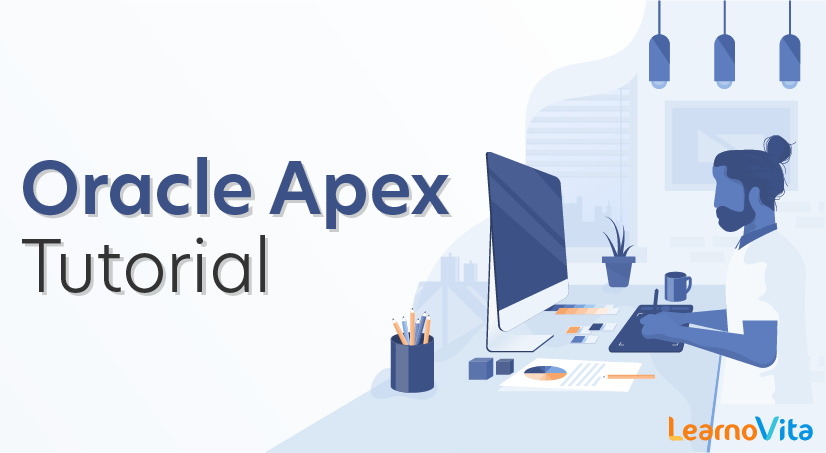
Oracle Apex Tutorial
Last updated on 12th Oct 2020, Blog, Oracle, Tutorials
- Oracle Application Express (APEX) is Oracle’s primary tool for Database and web application development. APEX adoption has exploded over recent years and is now considered by Oracle themselves to be fundamental to their own application development requirements for internal and external web based systems APEX is a free to use development environment to build web based applications using SQL and PL/SQL. Explorer has been using APEX since 2004 to develop professional business applications for desktops and mobile devices.
- You can develop the Apex code in either Sandbox or Developer edition of Salesforce. A Sandbox organization is a copy of your organization in which you can write code and test it without taking the risk of data modification or disturbing the normal functionality. As per the standard industrial practice, you have to develop the code in Sandbox and then deploy it to the Production environment.
- For this tutorial, we will be using the Developer edition of Salesforce. In the Developer edition, you will not have the option of creating a Sandbox organization. The Sandbox features are available in other editions of Salesforce.
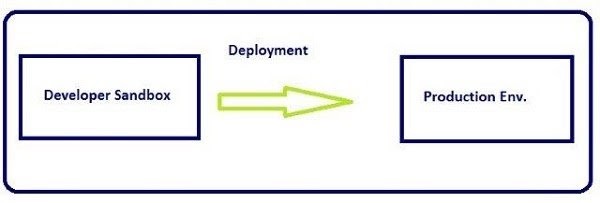
Apex Code Development Tools
In all the editions, we can use any of the following three tools to develop the code −
- Force.com Developer Console
- Force.com IDE
- Code Editor in the Salesforce User Interface
How can I learn Oracle APEX?
- 1. Trial and Error : Best way to learn new technology is by starting using it and I personally don’t like to learn the technology first and implement it. …
- 2. Get trained in PL/SQL and CSS : As you have already aware Apex revolves around DB and Front-end; get mastered on pl/sql and Css coding.
What is Oracle APEX used for?
Oracle Application Express (Oracle APEX) is a rapid web application development tool for the Oracle database. Using only a web browser and limited programming experience, you can develop and deploy professional applications that are both fast and secure
Features of Apex:
Here are important features of Apex:
- 1. Apex is a case insensitive language.
- 2. You can perform DML operations like INSERT, UPDATE, UPSERT, DELETE on sObject records using apex.
- 3. You can query sObject records using SOQL(salesforce object query language) and SOSL(salesforce object search language) in apex.
- 4. Allows you to create a unit test and execute them to verify the code coverage and efficiency of the code in apex.
- 5. Apex executes in a multi-tenant environment, and Salesforce has defined some governor limits that prevent a user from controlling the shared resources. Any code that crosses the salesforce governor limit fails, an error shows up.
- 6. A Sales object can be used as a datatype in apex. For example –
Account acc = new Account();
,here Account is a standard salesforce object. - 7. Apex automatically upgrades with every Salesforce release.
When Should Developer Choose Apex
Apex code should only be written if a business scenario is too complex and can’t be implemented using the pre-built functionality provided by Salesforce.
Following are the few scenarios where we need to write apex code:
- To create web services that integrate Salesforce with other applications.
- To implement custom validation on sobjects.
- To execute custom apex logic when a DML operation is performed.
- To implement functionality that can’t be implemented using existing workflows flows and process builders functionality.
- To set up email services, you need to include processing the contents, headers, and attachments of email using apex code.
Working Structure Of Apex:
Following are the flow of actions for an apex code:
- 1. Developer Action : All the apex code written by a developer is compiled into a set of instructions that can be understood by an apex runtime interpreter when the developer saves the code to the platform and these instructions are then saved as metadata to the platform.
- 2. End User Action : When the user event executes an apex code, the platform server gets the compiled instructions from metadata and runs them through the apex interpreter before returning the result.

What is Oracle?
Oracle database is a relational database management system. It is known as Oracle database, OracleDB or simply Oracle. It is produced and marketed by Oracle Corporation.
Oracle database is the first database designed for enterprise grid computing. The enterprise grid computing provides the most flexible and cost effective way to manage information and applications.
Different editions of Oracle database
Following are the four editions of the Oracle database.
- 1. Enterprise Edition : It is the most robust and secure edition. It offers all features, including superior performance and security.
- 2. Standard Edition : It provides the base functionality for users that do not require Enterprise Edition’s robust package.
- 3. Express Edition (XE) : It is the lightweight, free and limited Windows and Linux edition.
- 4. Oracle Lite : It is designed for mobile devices.
The Oracle Corporation
- Oracle Corporation is the largest software company in the field of database business. Its relational database was the first to support SQL which has since become the industry standard.
- Oracle database is one of the most trusted and widely used relational database engines. The biggest rival of Oracle database is Microsoft’s SQL Server.
Subscribe For Free Demo
Error: Contact form not found.
Create Workspace
First, you need to log in the administration system of Oracle APEX in order to declare a Workspace. A Workspace will work with a SCHEME in the database. Workspace contains Applications (including a system of forms, reports, and so on), managing users who participate in programming, or users who use the application.
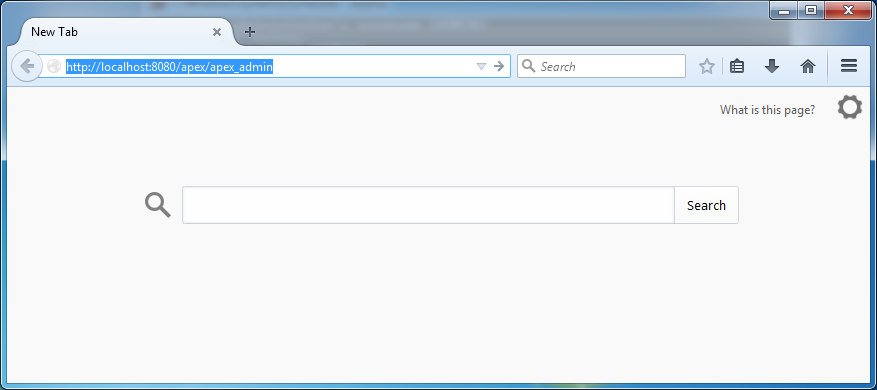
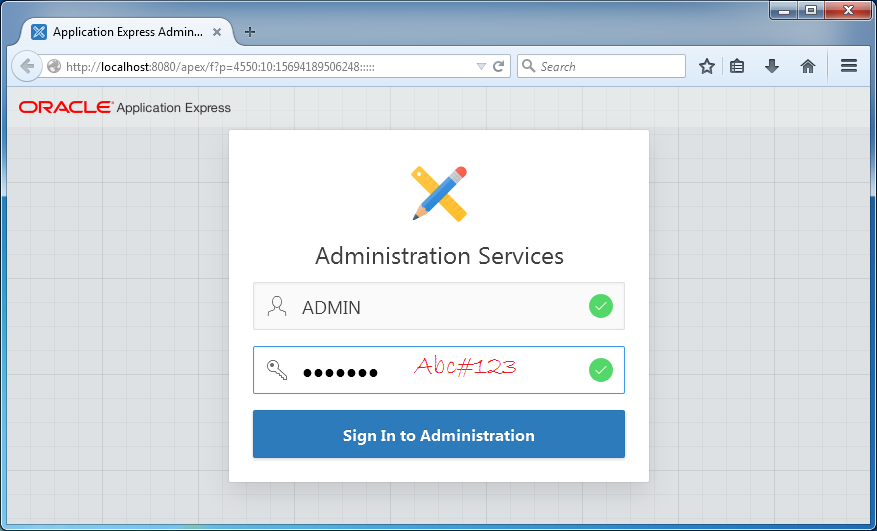
You need to create new Workspace:
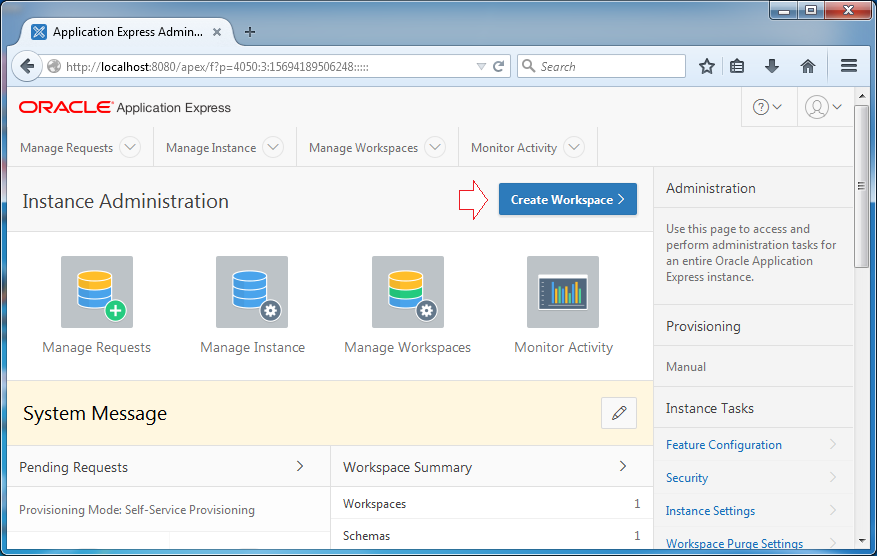
Enter:
Workspace Name: DEV_WORKSPACE
Workspace ID: 1234567
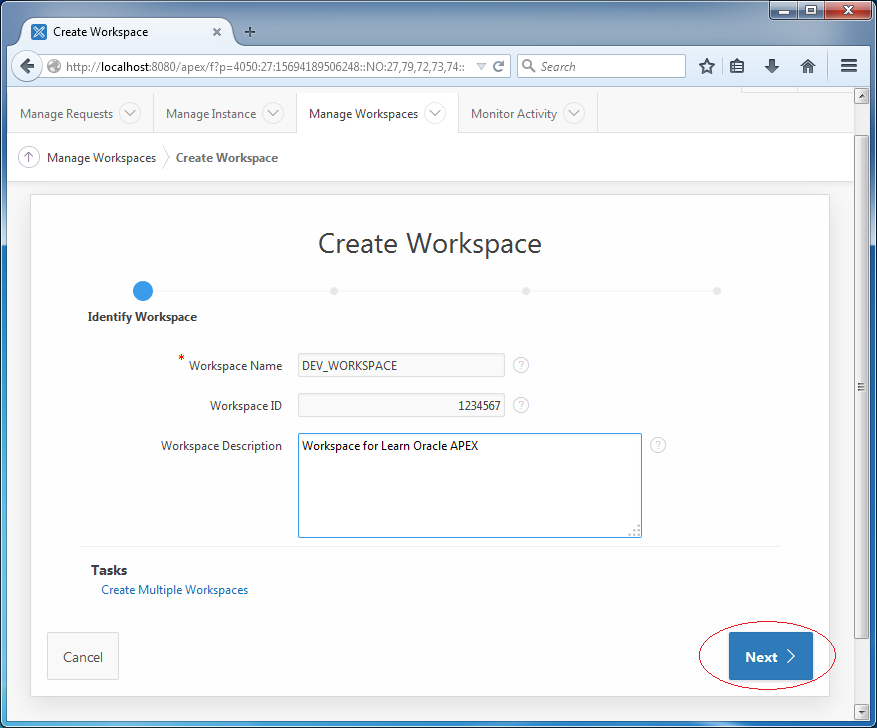
You can select a SCHEMA available in Database. Here I create a new SCHEMA named DEV with password dev123.
If you use Oracle 12c, the schema name may have to start with ##. For example: ##DEV.
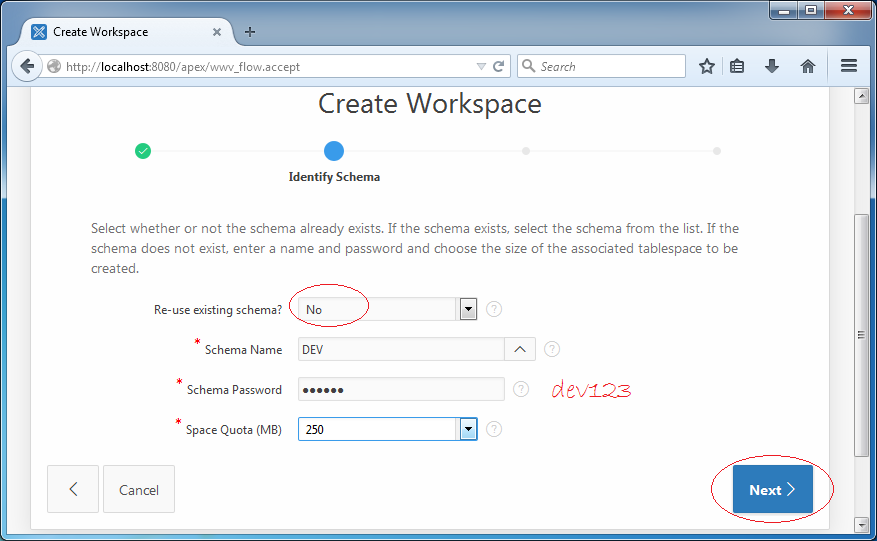
In the previous step, you created a SCHEMA named DEV. It means 1 user database is created and named DEV.
In this step, you need to declare an administration User of Workspace. It is not a user database, but it is an administration user of this APEX Workspace. It is capable of creating applications, other users as programmers, or users who use the application..
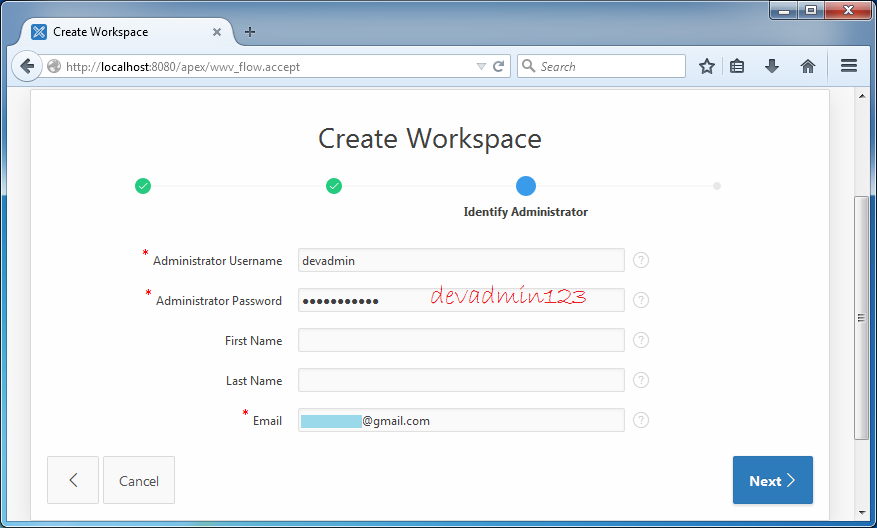
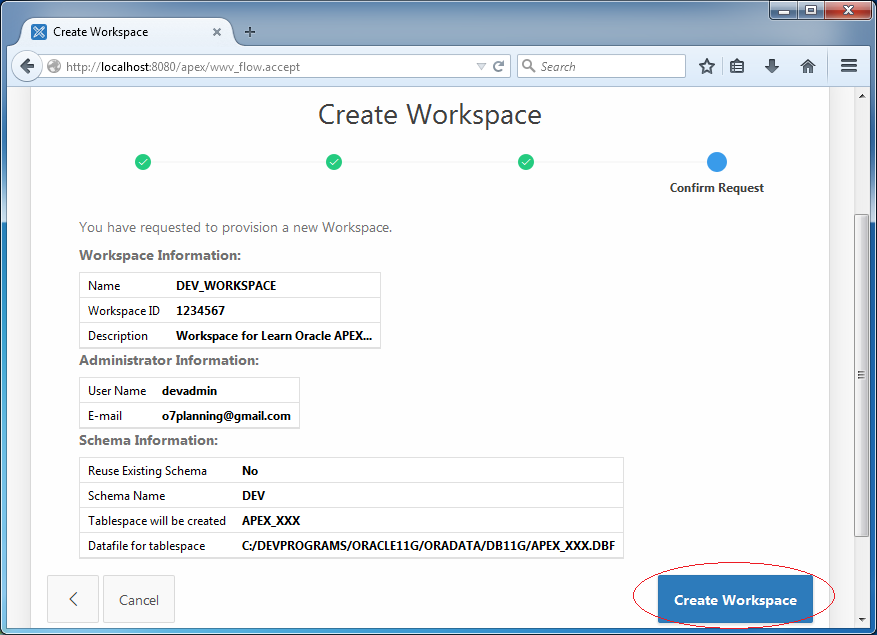
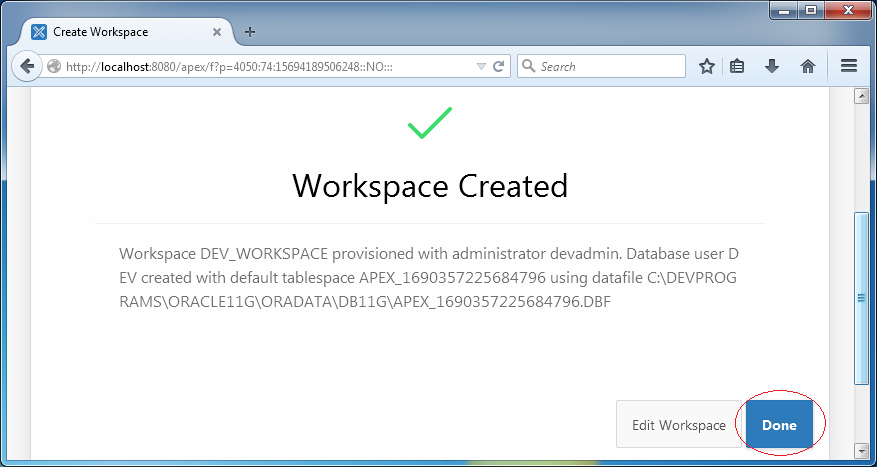
Your Workspace has been created. You can see the list of current Workspace and edit if you want.
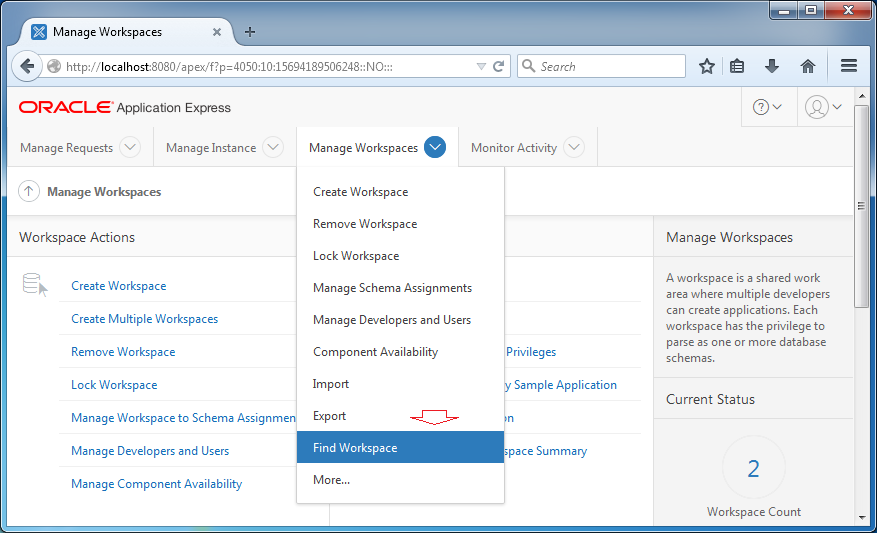
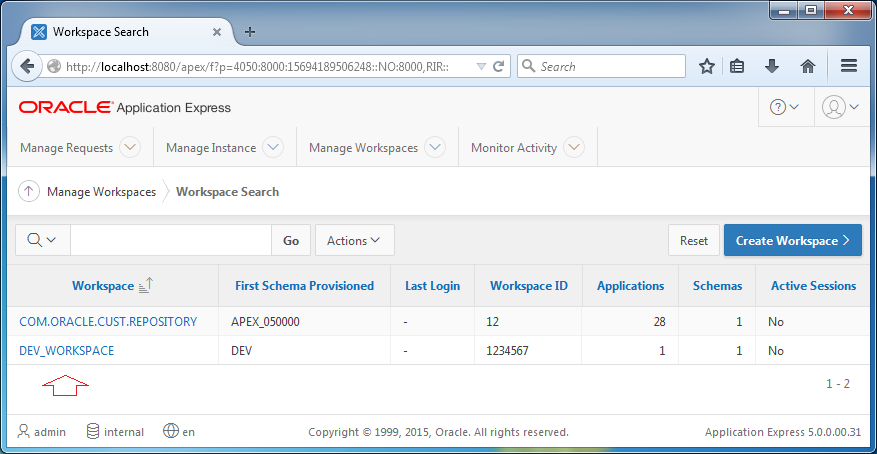
Work with Workspace
In the above step, you created a Workspace named DEV_WORKSPACE. Now we will log in and work with this Workspace.
Enter:
Workspace: DEV_WORKSPACE
User Name: devadmin
Password: devadmin123
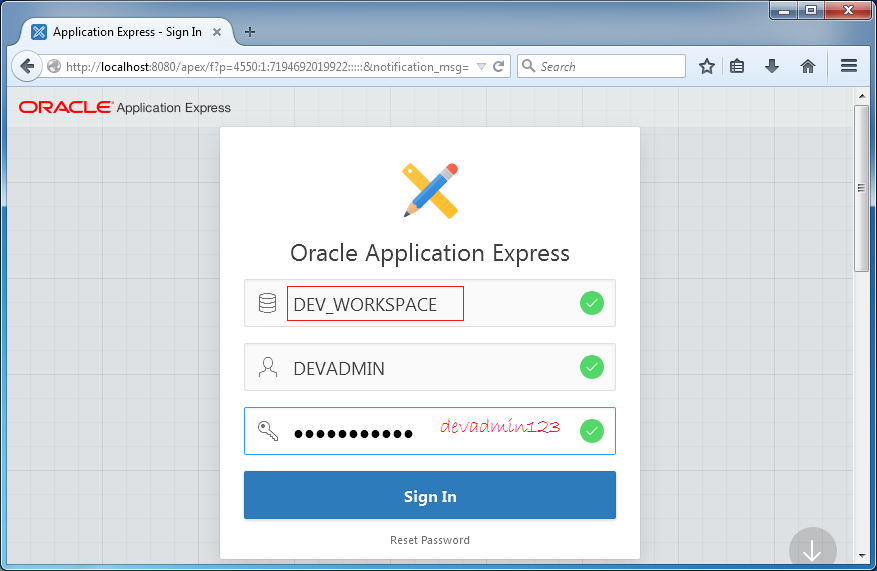
In the first time of logging in Workspace, the system requires you to change your password, but you can keep your password intact.
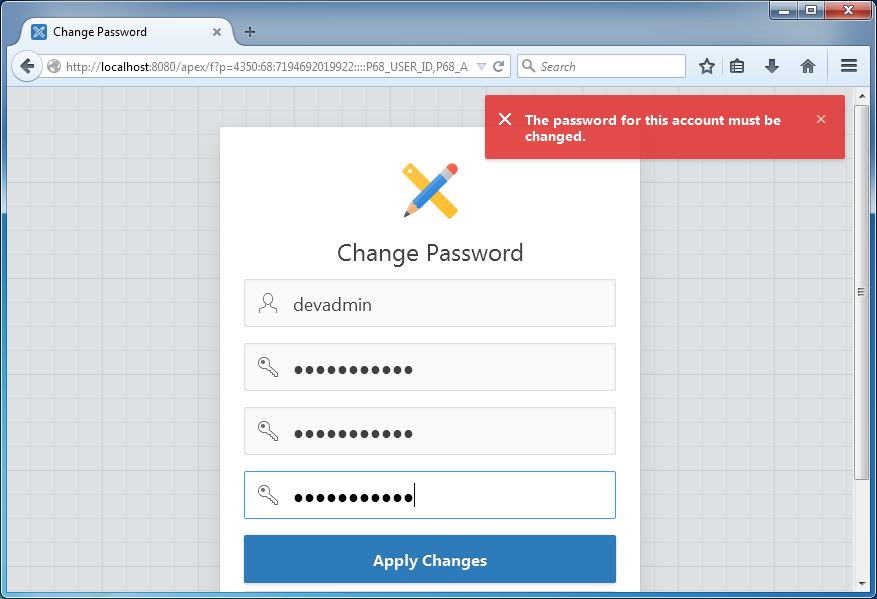
You are logged in DEV_WORKSPACE Workspace.
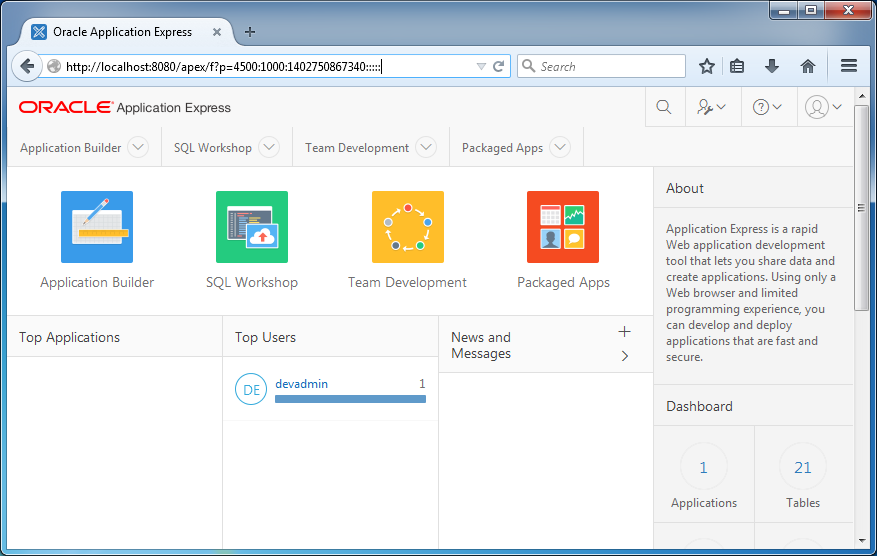
User and Group Management in Workspace
After logging in Workspace as an acting admin, you can create users and groups for Workspace.
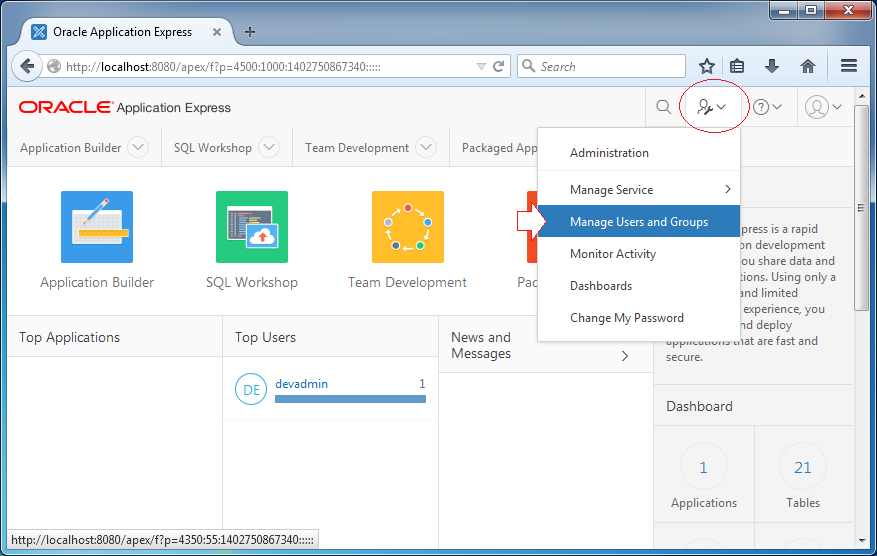
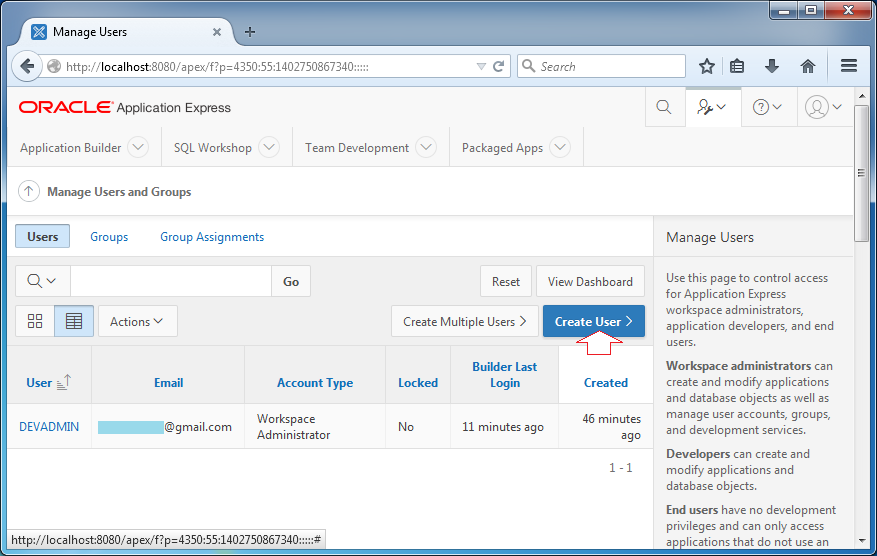
Enter:
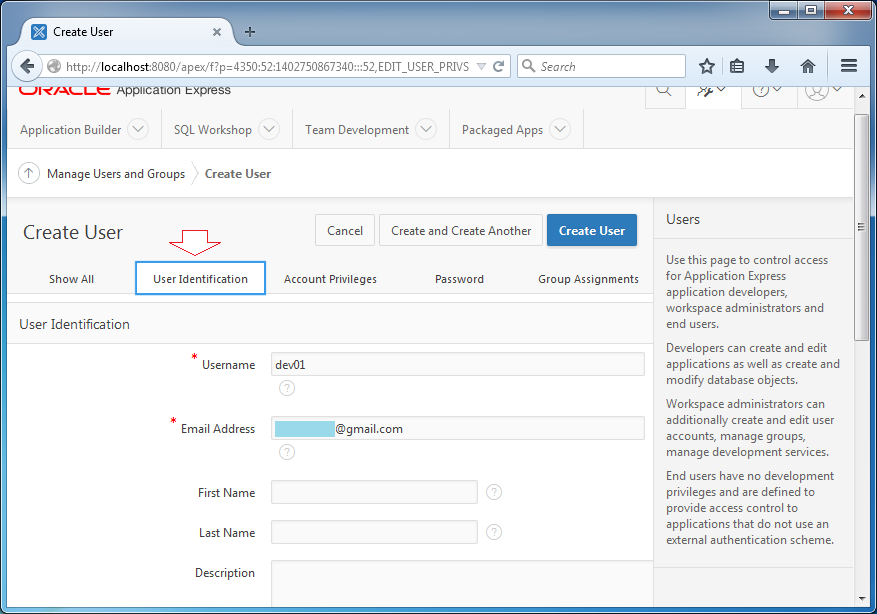
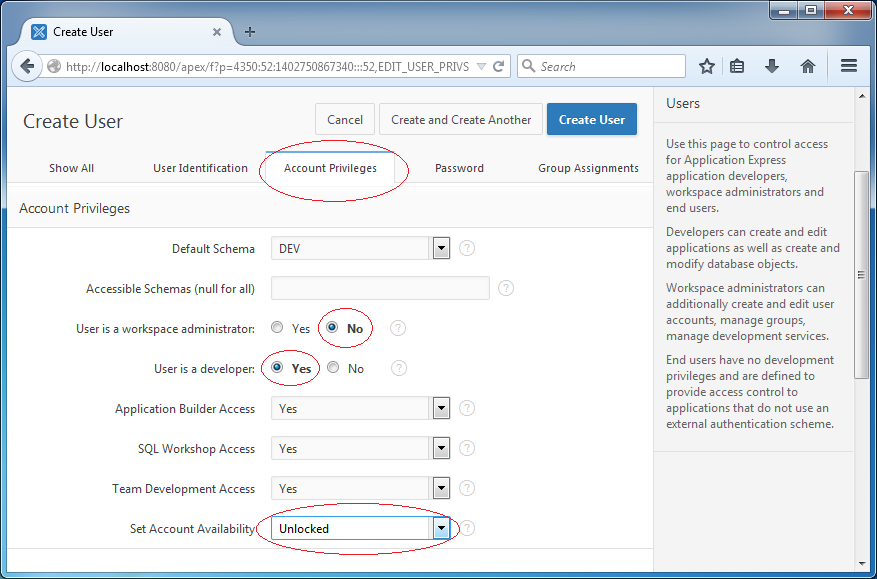
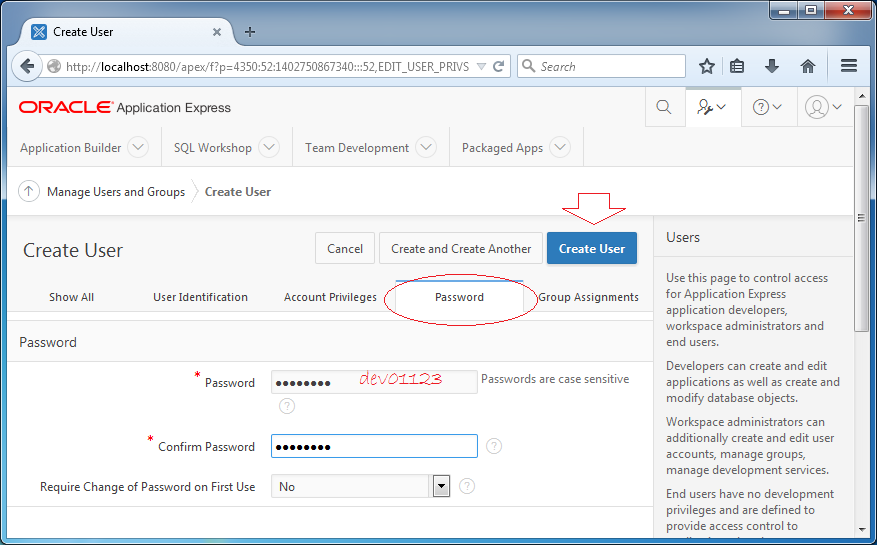
User dev01 has been created.
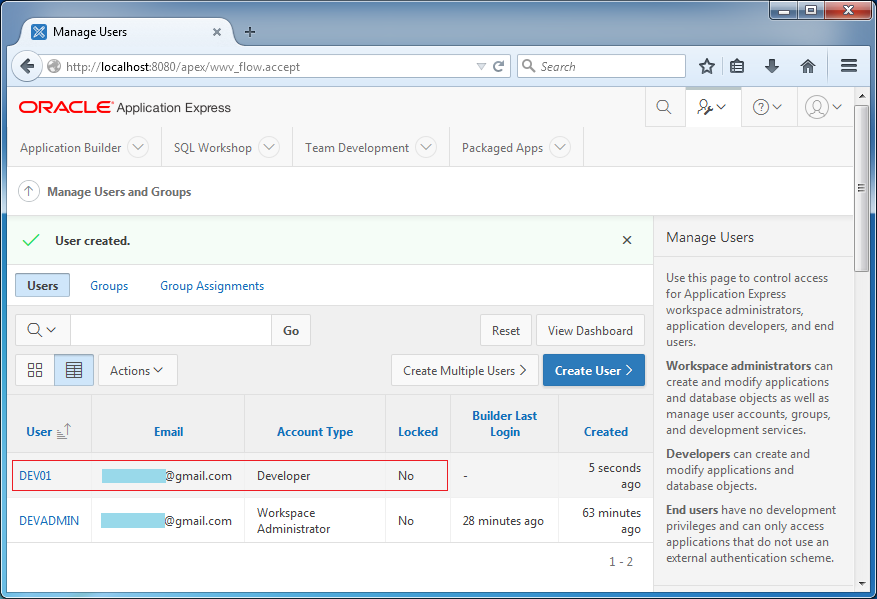
Now you can log out the system in order to log in with user dev01. You are now ready for programming Oracle APEX.
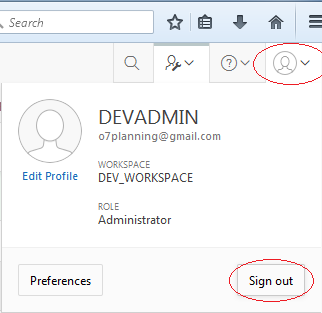
Conclusion
Create a database connection, which allowed you to access a database containing information your application needed. As you move on and develop more complex custom WebCenter applications, you may want to connect to other databases for various content, and so on. You can use the same methodology to create a connection to your other databases. Install the WebCenter schema, which allowed you to use the Tags service. Having this schema available will now let you use both the Tags and Links services, which you can learn more about in the Oracle Fusion Middleware Developer’s Guide for Oracle WebCenter. Create a simple custom WebCenter application, which allows you to check out how to use the built-in WebCenter application template to create a basic JSF application. create a customizable page, which took just a few steps to create using the Quick Start layout and a few customizable components from Oracle Composer. Use Oracle Composer, both in your development environment (by adding the customizable components to your page), and in your runtime environment (by adding components like a text box). At runtime, you were able to see how easy it is for an end user to customize her own page, including moving components around and adding new components. Apex is a strongly typed, object-oriented apex programming language that compiles and runs on force.com platform. Apex is a case insensitive language. Two types of flow of actions in Apex are 1) Developer action 2) End-user action. Apex helps you to create web services that integrate Salesforce with other applications.
Oracle Sample Resumes! Download & Edit, Get Noticed by Top Employers!DOWNLOAD
Apex governor limits are the limits enforced by apex runtime engine to ensure that any runway apex code and processes. Getter and setter can be used to execute code before the property value is accessed or changed. There are three ways of creating apex classes in Salesforce: 1)Developer Console 2)Force.com IDE and, 3) Apex class detail page. Apex triggers enable you to execute custom apex before and after a DML operation is performed. Batch class in salesforce is used to process a large number of records that would exceed the apex governor limits if processed normally.
